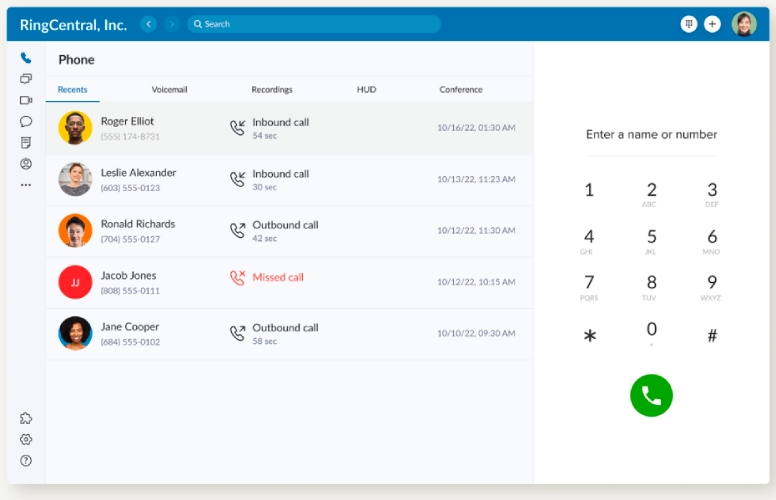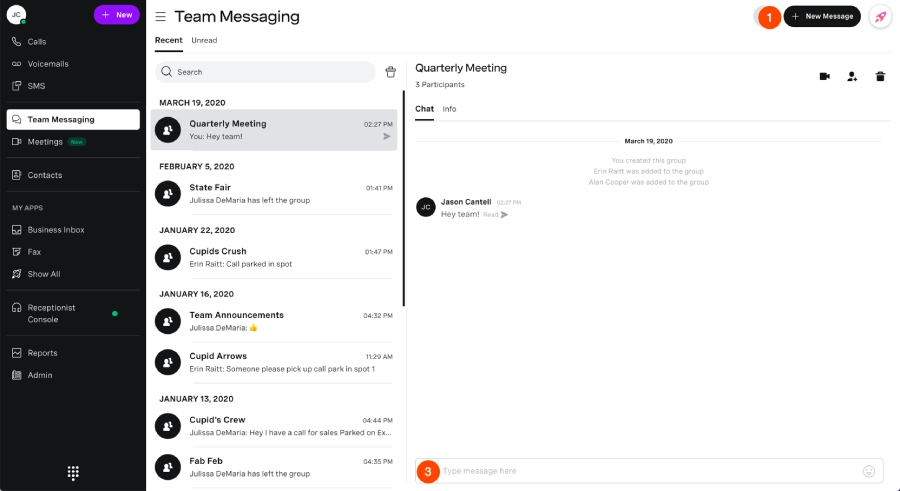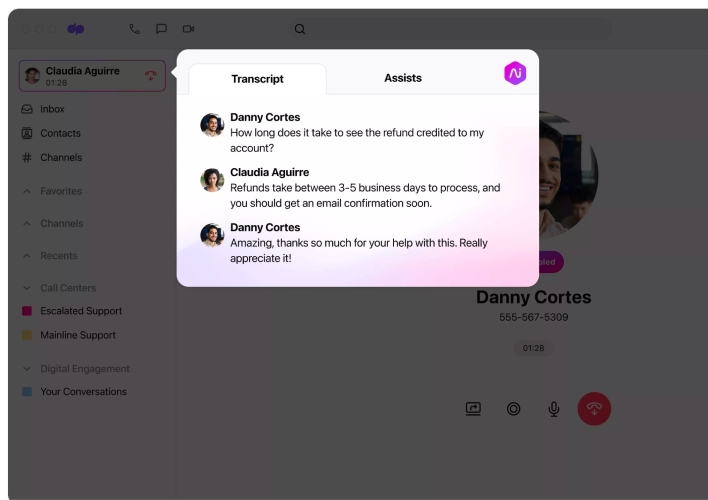The history of unified communications (UC) begins in the 1870s, with the invention of the telephone, the most basic communication device, which provided the backbone of voice technology. In the 1960s, the private branch exchange (PBX) was introduced, laying the foundations for efficient call routing.
Over the next three decades, PBX systems gained popularity, equipped with advanced call handling features, like hold music and call transfer. At the same time, communication capabilities were added to the phone system. In the 2000s, unified communications were in full swing. Let’s take a look at the major UC industry milestones.
The 1870s to 1960s: Foundation of the UC Technology
The rise of the telephone system formed a large part of the unified communications history, becoming the foundation of voice technology. The groundbreaking invention instantly connected people across distances. Moreover, it propelled the development of many technologies in the communications industry. The late 1800s and 1900s were particularly marked by various voice calling innovations.
1876: Telephone Patent
Alexander Graham Bell received the first United States patent for what he called the telephone, an “apparatus for transmitting vocal or other sounds telegraphically.” A few days after securing the patent, he sent his first successfully transmitted message to his assistant, Thomas Watson, saying, “Mr. Watson, come here, I need you.”
1878: First Telephone Exchange Company
The first ever telephone exchange company, the District Telephone Company of New Haven, was set up, employing operators who used switchboards to connect calls from one party to another. When operators received a call, they asked the caller who they wanted to call and plugged a patch cord into the socket corresponding to the receiving party to connect both parties.
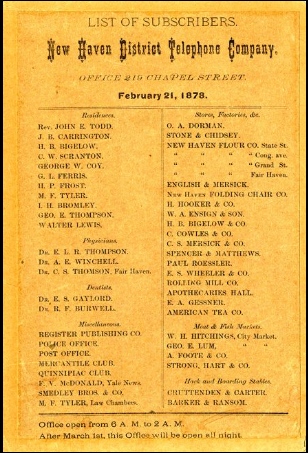
The first telephone exchange company, District Telephone Company of New Haven, issued its first phone directory.
(Source: History of Information)
The 1960s: Rise of the Private Branch Exchange (PBX)
Companies using telephones realize they would save more on communication costs if they had their own switchboard operators, paving the way for PBX. Eventually, the call switching process evolved to automated branch exchange to further cut down expenses and make call routing more efficient.
The 1960s to 1990s: Video & Email in Phone Systems
As automated PBX systems became more popular, they saw more call management capabilities that improved voice communications. At the same time, other communication tools were added, including audio and voice conferencing, ushering in more innovations in the unified communications history. During the late 1990s, the industry discovered the opportunity to conduct communications over the internet.
1964: Video Chat on Phone
The company Bell System introduced Picturephone, a telephone that featured video chat, allowing call participants to see each other. The device produced a black-and-white video on a five-inch screen. However, it didn’t garner much attention from the public until the 1980s and 1990s, when internet protocol (IP) technology made video conferencing more affordable.
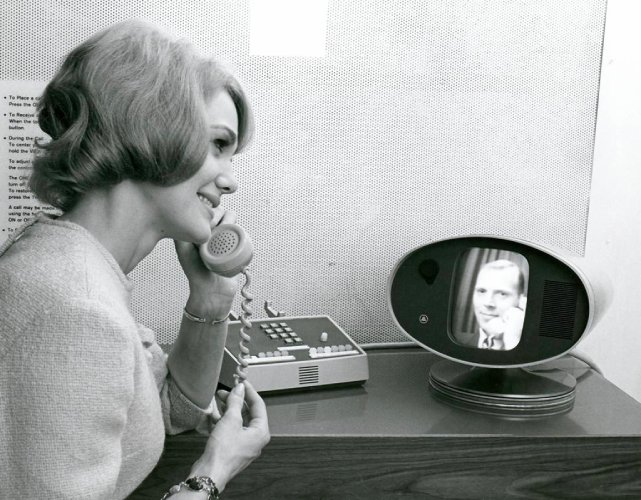
The Picturephone featured a screen that let users see the person they’re talking to on the phone.
(Source: New York Daily News)
1970s: Development of Interactive Voice Response (IVR)
Part of making the call routing process more efficient is the creation of the IVR system. Its development marked an essential part of the history of unified communications, as it was one of the first automation features in phone systems. It further helped businesses reduce expenses, as there was no need for human switchboard operators anymore.
1985: Emails in a Voicemail System
Telecommunications company VMX added an email reader to its voicemail system. Other firms followed suit with voicemail and email features on office telephones, cellphones, and computers, allowing employees to send and receive messages on different channels on different devices.
1996: Development of Session Initiation Protocol (SIP)
The internet engineering task force developed SIP, a signaling protocol that initiates, maintains, modifies, and terminates real-time communication sessions among internet protocol (IP) devices. It supports voice and video communications and instant messaging. In 1999, SIP was standardized.
2000 to 2010: IP Phones & More Communication Tools in a Platform
The popularity of internet-enabled phones marked this period in the history of unified communications. Phone manufacturer giants started to introduce IP devices with advanced tools for convenient and efficient communications. Later on, more communication capabilities were added to the platforms.
Early 2000s: Advanced IP Phones
In 2003, Cisco released the Cisco 7970G, its first-ever VoIP telephone with a colored and touchscreen interface. In 2004, Nortel released an IP phone with full web browsing and motion video capabilities. Most manufactured VoIP phones featured presence during this time, allowing users to check colleague’s availability quickly.
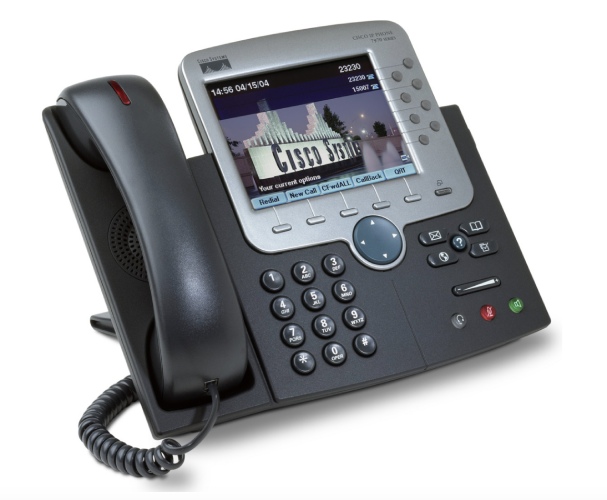
Cisco 7970G is the first-ever VoIP phone with a colored and touchscreen interface. (Source: Cisco)
2006 to 2010: Voice, Messaging & Video in One Solution
In 2006, the Cisco Unified Communications system was introduced, a tool that integrates voice, video, and data collaboration. It features a unified personal communicator that uses dynamic presence information, allowing employees to search directories and start voice and video calls with contacts.
Its unified presence server shows information about a user’s device, whether they’re using a telephone, personal computer, or video terminal. Meanwhile, Cisco’s customer interaction analyzer evaluates customer interactions and spots customer or agent distress, silence, and word patterns.
In 2007, Microsoft introduced its own unified communications system, the Office Communications Server (OCS). It encouraged businesses to switch from traditional PBX systems to VoIP software on a server. The solution offers voice calling, instant messaging, and video conferencing.
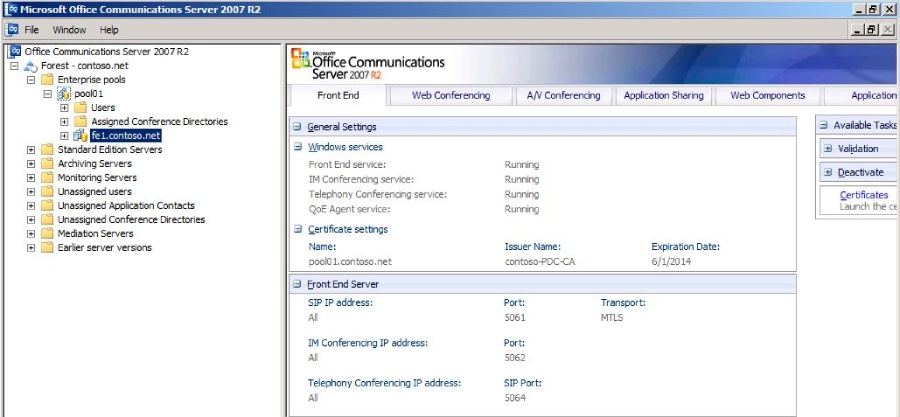
Microsoft Office Communications Server 2007 features web conferencing and application sharing. (Source: Microsoft)
Then, in 2010, Microsoft released its next-generation unified communications platform, Lync. Aside from telephony, it features audio and video conferencing, application and desktop sharing, instant messaging, and presence.
In addition, it integrates seamlessly with the email service Exchange, database and identity management solution Active Directory, web-based collaboration platform SharePoint, and Office. It was also in 2010 when the Bring-Your-Own-Device (BYOD) policy became mainstream in companies.
2011 to 2019: Mobility Focus & Integrated Contact Centers
During this period in UC history, cloud-based communication platforms became more popular. Similarly, the use of chat and mobile devices grew stronger. There was a greater emphasis on mobility, which increased the demand for all-in-one communications platforms. Similarly, UC features were integrated into contact center systems, allowing businesses to efficiently accommodate large volumes of calls.
2011: Unified Communications in Different Devices
Cisco introduced a new and improved unified communications system, Jabber, compatible with a range of devices and operating systems, including Windows, Android, iPhone, iPad, Nokia, and Blackberry. Its mobility features include presence, instant messaging, and visual voicemail.
2011 to 2015: Unified Communications in the Cloud
More telecommunication companies like Verizon and Sprint launched cloud-based unified communications platforms. The adoption of cloud solutions allowed businesses to cut down costs as they moved away from the maintenance of on-premise servers.
2015 to 2019: Unified Communications in Contact Center Platforms
In 2015, RingCentral unveiled its contact center solution, which was connected to its business phone system. Similarly, in 2019, Vonage launched CX Cloud Express, a contact center platform that features tools from its unified communications system Vonage Business Cloud (VBC). A year earlier, the organization acquired contact center provider NewVoiceMedia.
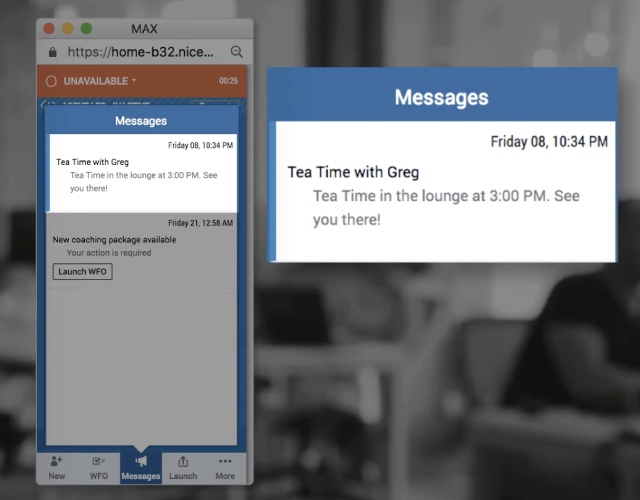
RingCentral Contact Center supports agent messaging. (Source: RingCentral)
Both feature-rich solutions were equipped with advanced call management tools suitable for catering to large volumes of calls. Moreover, they had unified communications capabilities, allowing colleagues to easily collaborate with each other and address customer concerns faster.
2020 to Present: New Normal of Work
The coronavirus pandemic played an influential role in the history of UC, dominating the year 2020 and bringing sweeping changes to business communications. The new normal continued even after the threat of the virus subsided in the following years.
2020: Remote Team Collaboration
World governments mandated social distancing to reduce the risk of infectious disease, compelling businesses to adopt work-from-home (WFH). Teams relied on instant messaging and video conferencing to work with colleagues remotely.
Video meeting platform Zoom saw a sharp increase in users when shelter-in-place orders were rolled out. In late April 2020, there were 300 million daily Zoom meeting participants, a significant increase from the 10 million users recorded in December 2019.
Learn how virtual meetings make an impact on businesses by checking out our video conferencing statistics guide.
2021 to Present: New Normal of Hybrid Work
As the pandemic situation stabilized, businesses adopted a hybrid work arrangement, where employees have the option to work in the office and elsewhere on certain days of the week. In this setup, businesses use unified communications solutions, alongside meeting room hardware devices, to achieve meeting equity, where everyone in the team enjoys equal opportunities to share ideas during discussions regardless of each member’s location.
RingCentral supports hybrid work with its RingCentral Rooms offering, which allows users to have a video conferencing solution in physical meeting rooms. The add-on feature RingCentral Rooms Connector lets businesses connect SIP standards-based hardware to the virtual meeting.

RingCentral Rooms provide the technology needed for seamless hybrid meetings. (Source: RingCentral)
The Future
The vibrant history of unified communications proves that the industry has made great strides in facilitating convenience and efficiency in business communications. It will continue evolving as it incorporates emerging technologies, such as artificial intelligence (AI) and simulated reality.
Some software solutions already have built-in AI tools, particularly in analytics and conversational IVR systems. However, we expect AI to do more in the next few years, including automatically creating follow-up meeting invites based on conference call participants’ discussions or hyper-personalizing customer outreach messages.
Similarly, virtual and augmented realities will be more mainstream in unified communications platforms, further enhancing the hybrid meeting experience. Cisco already launched Webex Hologram, a meeting solution that uses augmented reality headsets to produce immersive holograms. In the next few years, more providers will likely follow suit, and holograms will be a norm in remote, collaborative work environments.
Popular Unified Communications Software Providers
With its advancements over the last years and its strong potential for improvement in the future, unified communications platforms prove to be reliable tools that can transform the way you work. If you’re looking for the best software solutions for your business, click the tabs to learn about the most popular providers.
Frequently Asked Questions (FAQs)
Unified communications traces its roots back to the invention of the telephone in the 1870s, offering the foundation for voice communications. However, it was in the 1980s that the concept of unified communications became more concrete, as email service was integrated into phone systems.
Unified communications is used to describe the integration of several communication tools, including voice calling, instant messaging, video conferencing, and content collaboration, into one platform. Its goal is to streamline communications by keeping all messages among team members and from customers in one place.
Yes, most unified communications platforms are equipped with email service. Some popular providers offering this feature are Zoom One and Microsoft Teams.
Bottom Line
From its humble beginnings at the telephone and the first voicemail system with an integrated email reader, the unified communications industry has seen many remarkable innovations in the last few years. Today, it’s commonplace for businesses to use software solutions that let them place and receive calls while chatting with a colleague and attending a brainstorming session via video.
With more technologies being developed, businesses can expect more efficient remote collaboration and greater productivity among team members using unified communications platforms. Consider RingCentral in your business communications, and sign up for its 14-day free trial.
